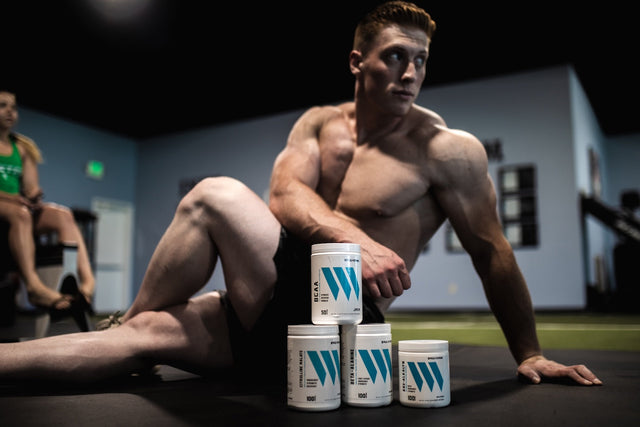Whether you're new to testosterone therapy or seeking to refine your injection technique, mastering testosterone injections is essential for your health journey. In this ultimate guide, we’ll walk you through everything you need to know about where and how to inject safely. From choosing the right injection site to understanding the equipment you’ll need, we’ll cover the ins and outs of safe practices to ensure you feel confident and secure. You’ll learn about the various types of injections, techniques to minimize discomfort, and tips for maintaining a sterile environment.
Empower yourself with knowledge and take charge of your testosterone therapy with the expertise found in this comprehensive resource. Let’s dive in and discover how to make your experience as seamless and effective as possible!
Understanding Testosterone and Its Importance
Testosterone is a critical hormone that plays an essential role in male health and development. It’s responsible for the formation of male reproductive tissues, supports muscle mass, regulates bone density, influences fat distribution, and fuels libido and mood. As men age, natural testosterone production declines, which can impact physical performance, energy, mental clarity, and overall well-being.
Why Testosterone Matters
-
Promotes muscle protein synthesis and physical strength
-
Enhances libido and sexual function
-
Supports cognitive clarity, motivation, and focus
-
Aids in fat metabolism and weight management
-
Influences mood stability and emotional well-being
-
Essential for red blood cell production
Low testosterone—also known as hypogonadism—can significantly impact quality of life. In such cases, Testosterone Replacement Therapy (TRT) becomes a valuable treatment option under medical supervision.
“Aging-related testosterone deficiency has been associated with reduced physical function, depression, and decreased libido.” – Bhasin et al., Journal of Clinical Endocrinology & Metabolism
Overview of Testosterone Injections
Testosterone injections are among the most effective forms of TRT. These synthetic testosterone esters are structurally identical to naturally occurring testosterone, allowing them to integrate seamlessly into the body’s hormone network.
Forms of Injectable Testosterone:
-
Testosterone Cypionate: Long-acting (inject every 7–14 days)
-
Testosterone Enanthate: Long-acting (similar to cypionate)
-
Testosterone Propionate: Short-acting (inject every 2–3 days)
"Injectable testosterone offers rapid absorption and predictable hormone levels when administered correctly." – Saad et al., Therapeutic Advances in Urology
Expanded Benefits of Testosterone Therapy (TRT)
Testosterone Replacement Therapy (TRT) has gained attention as a viable solution for men with clinically low testosterone levels (hypogonadism), helping restore physical, mental, and emotional health. While individual responses may vary, research consistently supports the wide-ranging benefits of restoring testosterone to physiological levels.
1. Increased Energy and Reduced Fatigue
Low testosterone is frequently linked to persistent fatigue and a general lack of motivation. Testosterone supports mitochondrial function, which plays a crucial role in cellular energy production.
“Testosterone therapy in hypogonadal men significantly improved energy, mood, and sexual function compared to placebo.”
— Wang et al., Journal of Clinical Endocrinology & Metabolism
Why it matters:
Improved energy levels enhance productivity, exercise adherence, and quality of life—especially in men over 40 who may otherwise attribute fatigue solely to aging.
2. Improved Lean Muscle Mass and Strength
Testosterone is a potent anabolic hormone that stimulates muscle protein synthesis and satellite cell activation, both of which are essential for muscle repair and hypertrophy.
“Testosterone significantly increased fat-free mass, muscle size, and strength in both young and older men.”
— Bhasin et al., New England Journal of Medicine
Why it matters:
Higher lean mass improves metabolic rate, physical function, and injury prevention. This is particularly important for aging men facing sarcopenia (age-related muscle loss).
3. Reduction in Body Fat
Testosterone influences fat metabolism by enhancing lipolysis (fat breakdown) and insulin sensitivity, while also inhibiting fat storage enzymes in adipose tissue.
“TRT in hypogonadal men leads to a reduction in visceral fat and waist circumference, independent of diet and exercise.”
— Saad et al., Current Opinion in Endocrinology, Diabetes and Obesity
Why it matters:
Visceral fat is closely linked with metabolic syndrome, insulin resistance, and cardiovascular disease—making fat loss a critical benefit of TRT.
4. Enhanced Libido and Sexual Function
Testosterone is directly responsible for sexual desire, erectile quality, and overall sexual satisfaction. Low levels often correlate with erectile dysfunction, delayed orgasm, and decreased interest in sex.
“Testosterone therapy improved sexual desire and erectile function in men with low testosterone.”
— Corona et al., Journal of Sexual Medicine
Why it matters:
Sexual health is a foundational aspect of emotional well-being, relationships, and confidence—TRT can restore these areas with measurable improvements.
5. Elevated Mood and Reduced Symptoms of Depression
Low testosterone has been associated with higher rates of depression, irritability, and anxiety. TRT may offer psychological benefits even in men without clinical depression.
“Testosterone treatment in hypogonadal men resulted in significantly improved mood, reduced depressive symptoms, and better emotional well-being.”
— Zarrouf et al., Journal of Psychiatric Practice
Why it matters:
Mental health is intertwined with hormonal function. Addressing low testosterone can enhance clarity, focus, motivation, and emotional resilience.
6. Cognitive Function: Focus, Memory, and Processing Speed
Testosterone has neuroprotective effects and supports cognitive performance, particularly in aging men. It helps regulate dopamine, acetylcholine, and serotonin pathways in the brain.
“Men with higher endogenous testosterone perform better in spatial, verbal memory, and executive function tasks.”
— Cherrier et al., Journal of Clinical Endocrinology & Metabolism
“Testosterone supplementation improved verbal memory and working memory in older men with low T.”
— Janowsky et al., Behavioral Neuroscience
Why it matters:
Cognitive decline is a concern for aging populations. TRT may provide a cognitive edge, especially for those in leadership roles or cognitively demanding careers.
7. Improved Cardiovascular Markers (when monitored properly)
Testosterone has vasodilatory properties and may improve red blood cell production, oxygen delivery, and exercise performance. Some studies also suggest improvements in HDL cholesterol and insulin resistance with TRT when monitored carefully.
“TRT was associated with a decreased risk of myocardial infarction and stroke in men with hypogonadism compared to untreated men.”
— Baillargeon et al., Annals of Pharmacotherapy
“Normalization of testosterone through TRT is associated with reduced all-cause mortality in men with low testosterone.”
— Sharma et al., European Heart Journal
Why it matters:
When guided by proper clinical oversight, TRT may provide cardiovascular benefits—especially when paired with lifestyle improvements and lab monitoring.
8. Bone Density and Osteoporosis Prevention
Testosterone supports bone mineral density by stimulating osteoblast activity. This is especially important for older men at risk of fractures.
“TRT significantly increased lumbar spine and femoral neck bone mineral density in hypogonadal men.”
— Snyder et al., Journal of Clinical Endocrinology & Metabolism
Why it matters:
Maintaining skeletal health reduces the risk of falls, fractures, and mobility decline as men age.
Bonus: Sleep Quality
Testosterone follows a diurnal rhythm, peaking in the early morning. Poor sleep disrupts this rhythm, but TRT—when combined with healthy sleep habits and supplements like Swolverine ZMT—can help restore deeper, more restorative sleep patterns.
“Sleep disturbances are both a cause and consequence of low testosterone levels.”
— Andersen & Tufik, Sleep Science
Testosterone therapy, when properly monitored and clinically indicated, offers evidence-based benefits that extend far beyond muscle and libido. From fat metabolism to mental clarity, mood stabilization, sexual wellness, and bone health, TRT has the potential to dramatically improve quality of life in hypogonadal men.
Preparing for Your Injection: What You Need
-
Testosterone vial (cypionate, enanthate, or propionate)
-
Syringe (1–3 mL)
-
Injection needle (usually 22–25 gauge)
-
Alcohol swabs
-
Sharps disposal container
Prep Steps:
-
Wash hands thoroughly
-
Clean vial top and injection site with alcohol
-
Draw prescribed dose (tap out air bubbles)
-
Inject using proper technique
Safe Injection Techniques: Step-by-Step
For Intramuscular (IM) Injections:
-
Common Sites: Glutes, deltoids, or thigh (vastus lateralis)
-
Insert needle at 90° angle
-
Aspirate (pull back plunger slightly); if no blood, inject slowly
For Subcutaneous (SubQ) Injections:
-
Common Sites: Abdomen, outer thigh
-
Insert at 45° angle
-
Inject slowly, then apply pressure post-injection
Post-Injection Tips:
-
Rotate sites to prevent scar tissue
-
Apply a cold compress if needed
-
Dispose of syringes properly
Choosing the Right Injection Site: Pros and Cons
| Site | Type | Pros | Cons |
|---|---|---|---|
| Gluteus | Intramuscular | Low pain, large muscle | May require assistance |
| Deltoid | Intramuscular | Easily accessible | More nerve endings, possible soreness |
| Thigh (Vastus) | Intramuscular | Great for self-injection | Some report post-injection soreness |
| Abdomen/Thigh | Subcutaneous | Less painful, no deep muscle penetration | May have slower absorption |
Managing Side Effects and Complications
Common Side Effects:
-
Injection site pain or swelling
-
Acne due to increased sebum
-
Mood fluctuations or irritability
Proactive Management:
-
Rotate injection sites regularly
-
Use OTC acne treatments or reduce dose if needed
-
Communicate mood changes with your provider
Frequency and Dosage: Finding the Right Balance
| Testosterone Ester | Half-Life | Injection Frequency |
|---|---|---|
| Cypionate | ~7–8 days | Every 7–14 days |
| Enanthate | ~4–5 days | Every 5–10 days |
| Propionate | ~2 days | Every 2–3 days |
Consistency and lab monitoring are key to avoiding testosterone spikes and crashes. Your provider will adjust the protocol based on bloodwork, symptoms, and goals.
“Stable testosterone levels are essential to avoid mood swings, fatigue, and suboptimal results.” – Zitzmann, The Aging Male
Supplement Stack Tip: Swolverine ZMT + TRT
If you're on TRT, consider pairing your protocol with Swolverine ZMT, a hormone support supplement crafted to optimize sleep, manage cortisol, and enhance natural testosterone rhythms. ZMT includes:
-
Zinc – Essential for testosterone production
-
Magnesium Glycinate – Improves sleep and recovery
-
Tongkat Ali – Boosts libido and reduces cortisol
-
DIM – Supports estrogen metabolism
-
Rhodiola Rosea – Stress adaptation
-
Ashwagandha KSM-66 – Lowers cortisol, supports mood
-
GABA + Melatonin – Deep, restorative sleep
-
DHEA – Precursor to testosterone
This synergistic formula enhances the quality of your recovery and hormonal environment, supporting TRT from multiple angles.
Conclusion and Resources for Further Support
Mastering testosterone injections is an essential aspect of successful testosterone therapy. By understanding the importance of testosterone, the different types of injections, and the benefits of therapy, you can make informed decisions about your treatment. Proper preparation, safe injection techniques, and choosing the right injection site are crucial for minimizing discomfort and ensuring the effectiveness of your therapy.
Managing side effects and finding the right balance of frequency and dosage are also important for achieving optimal results. Regular communication with your healthcare provider and monitoring of your hormone levels will help ensure that your therapy is tailored to your individual needs.
For further support and information, consider reaching out to reputable sources such as the Endocrine Society, the American Urological Association, and other medical organizations specializing in hormone therapy. Online forums and support groups can also provide valuable insights and support from others who are undergoing testosterone therapy.
Empower yourself with knowledge and take charge of your testosterone therapy with confidence. By following the guidelines and recommendations outlined in this ultimate guide, you can ensure a safe, effective, and positive experience with testosterone injections.
Find similar articles:
Anabolics






